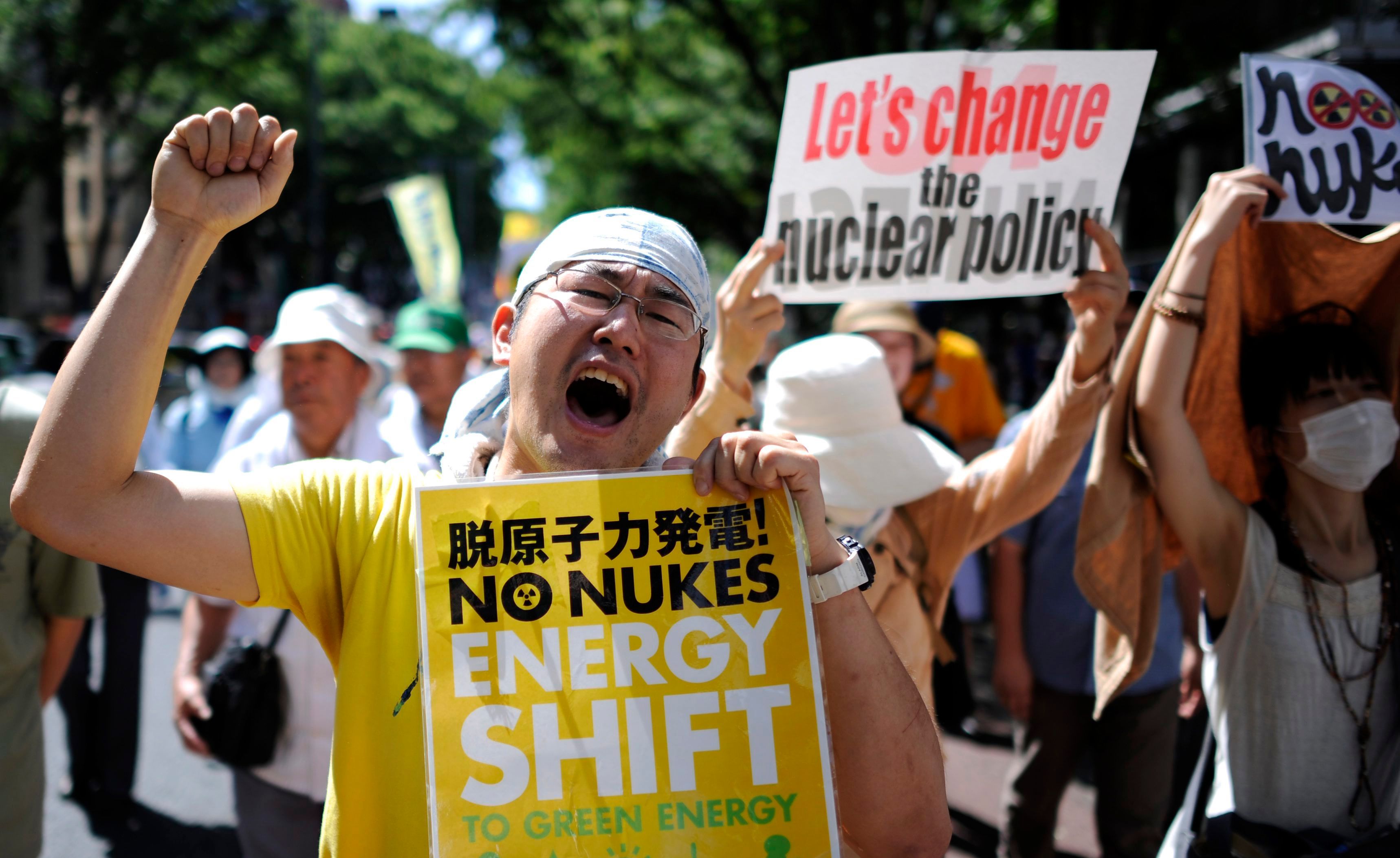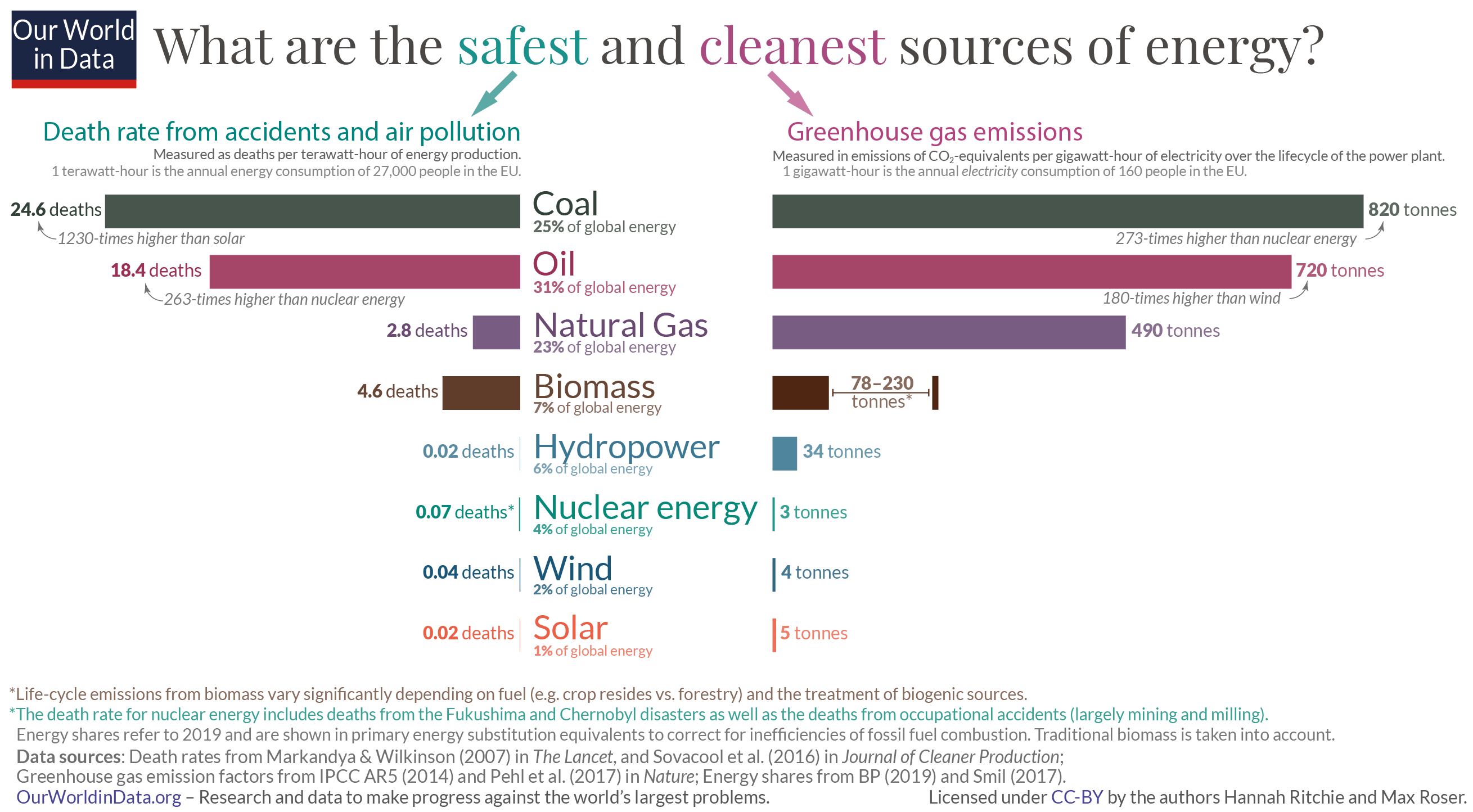Nuclear power: how fear and loathing in Springfield is delaying decarbonisation
Selva
4 min read
2/23/2022
Share
Not all publicity is good publicity
I blame the Simpsons.
Sure, Chernobyl, Fukushima and Kim Jong Ill’s big red button haven’t helped much either, but it's Homer juggling bright green sludge and setting off a nuclear meltdown in Springfield that’s done it. Thanks Matt Groening...
Back in the 1950s when it first hit the scene, nuclear power was heralded as a potential miracle energy source. Hippies didn’t like it because of the tech’s similarities with some rather nasty bombs, but otherwise, everyone was pretty excited by the espoused possibilities of endless, free energy.
Fast forward to today, Germany is shutting down nuclear plants early, nuke’s share of the global power mix has fallen from 17% to 10% over the last 3 decades and any mentions of support for nuclear has Greenpeace wetting its hemp trousers.
Given that we’ve got a bit of a carbon problem, you’d think we been going hell for leather for this zero-carbon, 24/7 reliable energy source, but no, it's less popular than Prince Andrew right now.
There are very valid concerns around nuclear power but here at Selva we’re big fans of this energy source. Lend us your eyes and let us tell you why.

Hold on, isn’t it really dangerous?
The 2011 Fukushima meltdown in Japan was bad, really bad. Robots sent into survey the damage were literally fried by the radiation levels. The total bill for the disaster came to a cool $200 billion. But do you know how many people died as a result of the accident? 0. None.
Chernobyl was worse. The immediate death toll was 31, and then another estimated 4,000 as a result of longer-term effects. But this tragedy was the consequence of human error at a poorly designed plant in a 1980’s crumbling Soviet Union. Hardly a fair representation of the much more sophisticated tech and stricter regulation we have today.
By way of comparison, 4.2 million (that isn’t a typo) people die every year from the effects of air pollution, in large part caused by burning fossil fuels, including for power. Let alone the endless human suffering that runaway climate change could cause.
And no, the risk of some nuclear-physicist jihadis turning our reactors into a bomb is so small that it isn’t worth going into.

And what about all that nasty waste?
After the meltdown / nuclear armageddon concerns, the argument you’re likely to hear most often in the case against nuclear energy is waste.
Yes, it's definitely far from ideal that used nuclear fuel rods will still emit harmful radiation for tens of thousands of years. And this particularly potent waste (which is a solid, not a slimy green goo), known as “high level” waste, needs to be stored, monitored and managed for all this time so that it doesn’t get released into the environment.
But, here’s the thing, there’s hardly any of it. Literally. All of the used fuel rods ever produced by the US commercial nuclear industry since the late 1950s would cover just a single American football field to a height of approximately 3 meters.
I’m no scientist but surely we can figure that out. Finland is building a permanent storage site deep underground where the waste can lie undisturbed and inaccessible for millennia. Sounds sensible, and replicable.
Besides, what would you prefer: a) contained, small quantities of nuclear waste or b) invisible, diffuse waste of CO2 sitting out of reach in our atmosphere or c) untold amounts of hazardous waste from used solar panels and batteries?

Now, the benefits of nuclear power
If carbon is your thing, then know that nuclear energy produces 3 tonnes of CO2 per GWh of electricity produced. 270x less than coal, and 160x less than gas.
If cost is what you’re all about, then the latest International Energy Agency estimates have nuclear’s full cycle costs (ie considering all costs over the whole lifecycle and the total quantity of power generated) cheaper than coal, gas and offshore wind. Yes, it’s eye-wateringly expensive upfront (we’ll get to that) but, once built, it churns out power for ~40 years, making it among the cheapest forms of energy on a long term basis.
Concerned about reliability? Nuclear plants can run all-day every-day, without reliance on the weather or supplies from foreign despots. With gas and oil prices going sky high in 2021/22, in part thanks to the machinations of foreign despots in Russia, having an independent source of energy becomes increasingly appealing.
And if you’re worried about land use, you’ll be pleased to hear that nuclear power uses just a fraction of the land that wind and solar would (estimates range from 5-15%) for the same amount power output.

What’s the catch?
It’s not all plain sailing. Once you get over the manageable concerns of safety and waste, there is the very real issue of how expensive nuclear power can be and how long it takes to build these plants.
The energy transition is about economics just as much as it is about energy, climate and politics. A solution that bankrupts us is not a solution.
A new nuclear power station in the UK, Hinkley Point C, was announced in 2010 and was initially due to start generating power in 2017 at a cost of £18bn. But, plagued by political and construction delays, the latest estimate is that it will fire up in 2026 at a cost of £23bn (twice the cost of the London 2012 Olympics).
That’s about £350 for every man, woman and child in the UK (paid for in the form of high guaranteed minimum electricity sale prices for the power station's owners for 35 years…). With prices of other power sources falling, this high locked-in cost feels increasingly like a bad deal.
And 9 years is a long delay when we’re badly short of time to slash CO2 emissions.
These are very real problems and Hinkley Point has been a poor advert for the sector but it doesn’t have to be like this.
Increased standardization and reduced size of reactors is helping to reduce costs, uncertainty and delays. In 2020, China approved the construction of four new reactors at a total estimated cost of $10.2bn, with operations due to start in just 5 years. That is one third of the cost of Hinkley Point C and these reactors combined will have one third more generation capacity than the UK’s troubled project.
Meanwhile, in the UK, Rolls-Royce is moving ahead with its promising project to develop and build up to 16 small nuclear reactors (SMRs) across the UK at an estimated cost of a more bite-sized £2bn each.
As the modern nuclear industry moves along the learning curve, these cost, efficiency and flexibility gains can be realised around the world and help unlock nuclear power’s potential.
What we’re trying to say is
Nuclear power is the only zero-carbon, reliable power source we have. Yes there are pitfalls surrounding cost and waste, but these can be managed and there will always be trade-offs to make in the energy transition challenge.
If climate and environment are the priority then nuclear power has to have an important seat at the table. Let’s not allow for unfounded fear to block pragmatic progress. The Simpsons were soooo early 2000s.
Another great solution? Tree planting. Join Selva today to do just that.
